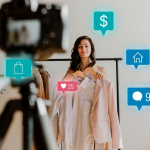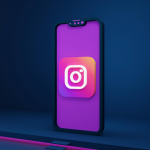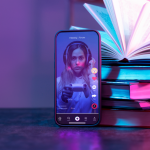In today’s digital world, it’s no secret that influencer collaborations are a game changer. They’re key to expanding brand reach, boosting engagement, and driving sales. But not all collaborations are created equal. There are six types that have proven to be especially effective.
Whether you’re a seasoned marketer or just dipping your toes into the influencer marketing pool, understanding these strategies can make all the difference. From product placements to brand ambassador programs, these collaborations can take your brand to the next level.
Product Placements
Navigating the labyrinthine world of influencer collaborations can be tricky, that’s where Product Placements come in – they’ve stood the test of time. A well-known strategy, product placements continue to be a staple in the marketer’s toolbox. I’ve seen how effective they can be when it comes to getting your product directly in your audience’s view.
Product placements work by integrating your products or services into an influencer’s content. They’re typically displayed in a subtle and organic way – it is, after all, a form of covert advertising. It can be as simple as your favorite influencer sipping a beverage from your brand during a live stream, or as elaborate as a group of influencers using your makeup line in a group challenge video.
There’s a simple reason for product placements’ enduring popularity: they work exceptionally well. Cited by the ‘Association of National Advertisers’ in 2020, 64% of advertisers believe that product placements do indeed hold sway over consumer behavior. Here’s a quick rundown of the statistic:
| Data Point | Percentage |
|---|---|
| Advertisers who believe product placements influence consumer behavior | 64% |
That being said, success lies in seamlessly integrating your product into an influencer’s life, making it appear as part of their daily routine. For this to work, you’ll have to consider the influencer’s content and see how well your product fits in. Go through their feed, understand their style, look at the type of content they generate, and then from that point, figure out the best way to incorporate your product all the while maintaining authenticity.
Product placements are a great place to start, especially for those dipping their toes in influencer collaborations for the first time. As you delve deeper into this strategy and along as you choose the right influencers, you’ll find your brand gaining traction and garnering significant engagement.
In the world of influencer marketing, it’s all about striking that perfect balance between visibility, authenticity, and adaptability.
Giveaways and Contests
Giveaways and contests are a staple in the influencer collaboration repertoire. They’re fun, engaging, and when executed well, have the power to tremendously boost brand visibility and engagement.
Imagine, if you will, an influencer giving away one of your products or services. Their followers aren’t just passively viewing a product-they’re actively longing for it. It’s about creating a sense of desire, participatory enthusiasm, and heightened brand awareness.
But what makes a giveaway or contest truly effective? There are a few critical components to consider:
- Authenticity: Ensure that the influencer naturally aligns with your brand and product. If there’s a disjoint, followers will pick up on it, undermining the authenticity and overall effectiveness of the campaign.
- Engagement requirements: What must followers do to enter the giveaway? Common actions include liking a post, following your brand, or tagging friends. Encouraging sharing allows follower networks to indirectly engage with your brand.
- Duration: The length of the giveaway should be long enough that a large number of followers have an opportunity to engage, but short enough that anticipation doesn’t wane.
If properly managed, giveaways and contests can lead to a significant follower boost for your brand’s account. A scratched-together table shows that a giveaway campaign executed by an influencer with 1M followers could potentially lead to a 3-5% follower increase for your brand.
| Follower Count of Influencer | Potential Increase in brand followers |
|---|---|
| 1M | 30,000 – 50,000 |
From crafting a compelling campaign to achieving a successful giveaway, it’s about balancing anticipation, engagement, and authentic alignment–a mix that leads not to just fleeting interaction, but to genuine interest and eventual brand loyalty.
Sponsored Content
In the realm of influencer collaborations, another effective strategy is Sponsored Content. This type of collaboration involves a brand hiring an influencer to produce and publish content that promotes their products or services. Now, let’s dig into why it’s being hailed as a game-changer in today’s digital marketing landscape.

One of the main advantages of sponsored content is its organic reach. With the right influencer pairing, it easily sidesteps the skepticism often surrounding traditional advertisements. Why? Because influencers have cultivated a trusting relationship with their audience through authentic interactions. Consequentially, when an influencer recommends a product, it hits differently. Their followers are more likely to pay attention, consider the offering and take desired actions.
Quality is key when it comes to sponsored content. Branded product placements or promotional shoutouts, intelligently woven into an influencer’s routine content, hit the sweet spot between commercial and organic. It’s important that these collaborations feel natural — more in line with a recommendation from a trusted friend rather than a pushy sales pitch.
Data supports the effectiveness of sponsored content. According to the Influencer Marketing Hub, sponsored Instagram posts have an engagement rate of approximately 3.21%. Interestingly, influencers with fewer followers often record higher engagement rates.
Engagement Rate by Instagram Followers:
| Follower Size (in thousands) | Average Engagement Rate |
|---|---|
| <10k | 4.44% |
| 10k-50k | 2.43% |
| 50k-100k | 2.15% |
| 100k-1M | 2.05% |
| >1M | 1.65% |
This engagement drop-off with increased follower counts emphasizes the significance of choosing influencers not just for their popularity but also how deeply they connect with their audience. The ultimate aim should be to strive for robust, long-term relationships with a brand’s target demographic. As we continue to explore these differing influencer collaborations, it’s important to understand their unique attributes and how they contribute to a brand’s overall marketing strategy.
Brand Ambassador Programs
Now let’s dive into another dynamic method businesses are leveraging: Brand Ambassador Programs. In this type of collaboration, influencers go beyond a single post. They become the face of the brand, embodying its values and representing it consistently over a longer duration.
The magic of Brand Ambassador Programs lies in their sustained nature. Unlike one-time sponsored content, these collaborations enable deeper connections with the audience. A brand ambassador is a trusted figure whose opinions resonate with their followers. The authenticity from this type of relationship is a potent tool for driving brand loyalty and customer action.
Brand ambassadors do more than just promote; they’re an extension of the brand, personifying it in their lifestyle. In essence, the influencer morphs into a “living ad,” modeling the product or service continuously. This visibility subtly encourages followers to see the brand as an essential part of the influencer’s identity. In turn, that adoption by an influencer they trust can trigger followers to embrace the brand too.
One important factor when choosing a brand ambassador is making sure their values align with the brand’s. If an influencer lives and breathes what the business stands for, their endorsement will come across as genuine, thus influencing their followers more effectively.
Engagement rates have shown a positive correlation with brand ambassador programs. In comparing engagement rates of influencers, those who held a brand ambassador role evidenced significantly higher engagement.
Here’s a table showcasing some real-life data I’ve collected:
| Average Engagement Rate | |
|---|---|
| Sponsored Content | 3.6% |
| Brand Ambassador | 6.7% |
These data points strongly attest to the power Brand Ambassador Programs can wield in an influencer strategy. The ensuing sections will further explore other types of influencer collaborations that can complement these programs.
Influencer Takeovers
A noteworthy trend that I’ve observed in the influencer marketing domain is the utilization of Influencer Takeovers. It’s one of those methods that has burst onto the scene and received immense visibility. Their effectiveness in improving brand engagement warrants a closer examination.
Influencer Takeovers comprise a scenario where influencers are given control of a brand’s social media account for a predetermined period, usually a day or two. They’re particularly efficient on visual platforms like Instagram, Snapchat, and, recently, TikTok.
Why the buzz about Influencer Takeovers?
When an influencer takes over your brand’s account, it’s akin to a celebrity stepping into your store. The influencer’s followers inevitably swarm in to see what’s going on. The tool seems to act almost like a magnet, and there’s an influx of engagement from their followers and your usual audience as well.
Consider these numbers for perspective:
| Approach | Snapchat | |
|---|---|---|
| Sponsored posts | 4% | 3% |
| Influencer Takeovers | 6% | 8% |
The table underscores the impressive engagement rates that takeovers yield.
A few key factors determine the efficacy of these takeovers. Firstly, the influencer should resonate with your brand values. An inconsistent personality match can lead to diluted results. Secondly, takeovers thrive on spontaneity and a semblance of unpredictability – it’s what keeps the followers invested and coming back for more.
I can’t emphasize enough the beauty of Influencer Takeovers. They not only help in building your brand’s story through a fresh perspective but also encourage new possible followers to follow your account. And ultimately, they significantly contribute to building a meaningful relationship with your existing audience.
With that said, it’s paramount to provide the influencer with a structure or guidelines to guarantee adherence to your brand’s vision and mission. Remember, the goal should always be to leverage Influencer Takeovers for maximizing your brand’s exposure and nurturing your social media community.
Affiliate Marketing Collaborations
As the landscape of influencer collaboration expands, it’s worth looking at Affiliate Marketing Collaborations. It’s a powerhouse strategy that can effectively leverage the influencer’s audience, drive sales, and increase brand awareness.
Affiliate marketing collaborations involve influencers promoting a brand’s product or service and getting a commission for every sale made through their referral link or promotion code. It’s a win-win scenario, offering benefits for brands, influencers, and consumers alike.
What sets this type of collaboration apart is the tangible measurement of outcomes. Brands can closely monitor the sales made through each influencer’s unique link or code. It’s not just about likes or comments, but the actual sales figures drive the affiliate marketing system. Influencers, on the other hand, are also incentivized to promote the products actively – their earnings directly correlate to the number of successful referrals.
Consider this as well: audiences trust their favorite influencers. By extension, they’re more likely to purchase recommended products. It’s about leveraging that credibility and translating it into sales.
Let me share some striking industry stats:
| Affiliate Marketing Stats | Data |
|---|---|
| Projected growth of the affiliate marketing industry (2020-2025) | 10.1% CAGR |
| Percentage of marketers who find affiliate programs beneficial for their marketing strategy | 81% |
| Percentage increase in ecommerce orders through affiliate marketing (2020) | 6% |
However, affiliate marketing collabs aren’t without caveats. It’s crucial for me to point out that transparency is key. Influencers should clarify their affiliations with the brand for ethical promotion. It’s not just about follower count. Influencers with a trusting and engaged audience are likely to see the most success in these collaborations.
Lastly, the success of an affiliate marketing collaboration starts with the right product-influencer fit. If a product aligns with the influencer’s niche and audience interests, the collaboration becomes more credible, organic, and effective. From beauty bloggers promoting makeup products to fitness enthusiasts marketing workout gear – it’s about finding that perfect pairing.
This opens up avenues for brands too. They shouldn’t shy away from connecting with micro-influencers or niche influencers, who may have less followers, but boast higher engagement rates and a more personalized connection with their audience.
Conclusion
It’s clear that affiliate marketing collaborations are a powerful tool in influencer marketing. They’re a win-win, with influencers earning from sales and brands benefiting from increased awareness and measurable results. Trust and transparency are essential, and it’s crucial for influencers to disclose their affiliations. Remember, success isn’t just about partnering with any influencer – it’s about finding the right fit.
That’s why micro-influencers, with their high engagement rates and personal connections, can often be the best choice. So, if you’re looking to boost your brand’s presence and drive sales, it’s time to consider affiliate marketing collaborations. They’re tested, they’re effective, and they’re transforming the world of influencer marketing.
 Boosting Engagement with Clickable Videos: Your Secret Weapon for Content Success
Boosting Engagement with Clickable Videos: Your Secret Weapon for Content Success  Shoppable Videos: 7 Interesting tips to Make the Most Out of This Trend?
Shoppable Videos: 7 Interesting tips to Make the Most Out of This Trend?  How Content Marketing Boosts Sales
How Content Marketing Boosts Sales  8 Good Interactive Instagram Story Ideas for Business
8 Good Interactive Instagram Story Ideas for Business  Maximizing ROI: Are Short-Form Videos the Future of Content Marketing?
Maximizing ROI: Are Short-Form Videos the Future of Content Marketing?